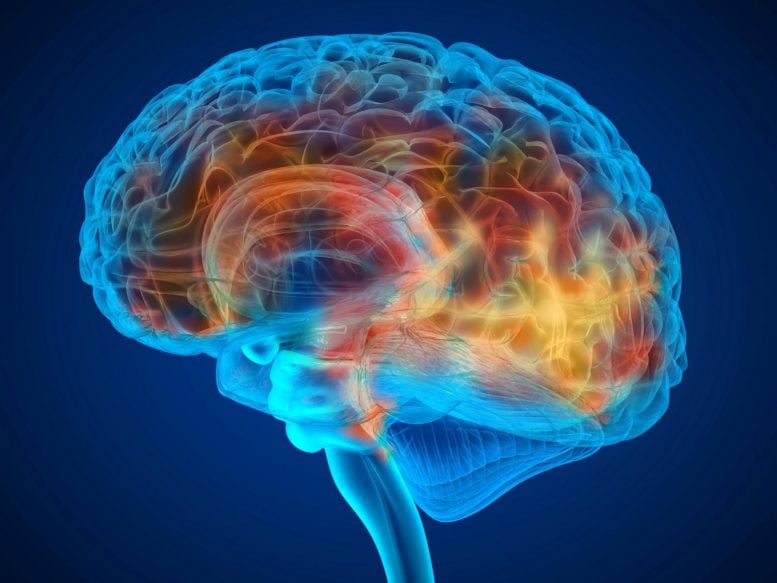
Researchers have found a potentially significant marker for Alzheimer’s disease, a protein called Arl8b, according to a recent publication in Genome Medicine.
Scientists have identified a protein, Arl8b, associated with Alzheimer’s disease. Found in high levels alongside amyloid-beta plaques in both mice and humans, Arl8b could be a potential marker for early detection of Alzheimer’s.
Alzheimer’s is considered a disease of old age, with most people being diagnosed after 65. But the condition actually begins developing out of sight many years before any symptoms emerge. Tiny proteins, known as amyloid-beta peptides, clump together in the brain to form plaques. These plaques lead to inflammation and eventually cause neuronal cell death.
Interplay of proteins in the brain reveals disease mechanism
Exactly what triggers these pathological changes is still unclear. “We’re lacking good diagnostic markers that would allow us to reliably detect the disease at an early stage or make predictions about its course,” says Professor Erich Wanker, head of the Proteomics and Molecular Mechanisms of Neurodegenerative Diseases Lab at the Max Delbrück Center.
Wanker and his team are studying brains with Alzheimer’s disease to understand their proteome – the interplay between all the proteins involved in the onset and course of the disease. Writing in Genome Medicine, the researchers now report on a new actor in the pathological process. Their discovery will help scientists understand the mechanisms underlying Alzheimer’s and could also serve as a marker for improved diagnostics.
To analyze changes in the proteome, Wanker’s team studies genetically modified mice. The mice have five mutations that occur in people with familial Alzheimer’s disease. The amyloid-beta plaques develop in the mice’s brains and the animals show typical symptoms, such as dementia.
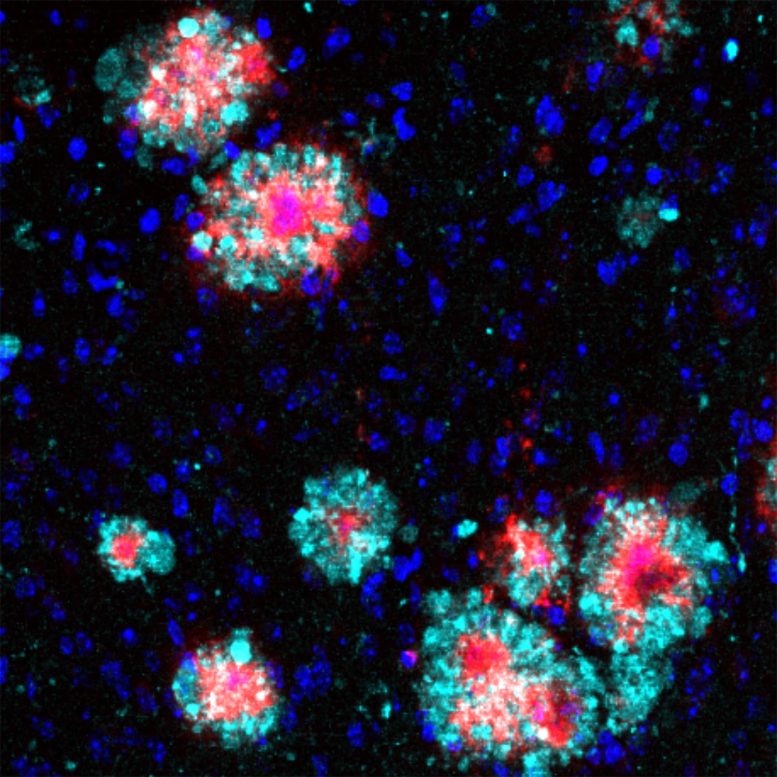
The Arl8b protein (turquoise) shows an accumulation around the amyloid-b aggregates (red). Cell nuclei are stained blue. The section was analyzed with immunofluorescence. Credit: AG Wanker, Max Delbrück Center
New perspectives for a better understanding of Alzheimer’s
“During our analyses, we noticed that a protein called Arl8b was building up in mouse brains, along with the amyloid-beta plaques,“ says Annett Böddrich, lead author of the paper. The researchers also found accumulations of the protein in brain samples from Alzheimer’s patients.
Arl8b is associated with lysosomes, cell organelles that are involved in degrading the protein clumps. A different team of researchers recently made an interesting discovery in the nematode worm: increasing Arl8b production can degrade the plaques, which reduces the damage to nerve cells. Closer study of Arl8b could be the key to better understanding Alzheimer’s disease – and could provide a new target for therapies.
Interesting candidate for a diagnostic marker
But there’s more: “We can show that Alzheimer’s patients have significantly more Arl8b in their cerebrospinal fluid than healthy controls,” says Böddrich. Unlike brain tissue, cerebrospinal fluid is easily accessible for diagnostic studies. “This means Arl8b is an interesting candidate for a diagnostic marker,” she says.
However, the study only looked at a small group of Alzheimer’s patients, so expectations should be kept in check: “It’s too early to hope for a diagnostic test,” says Wanker. Nevertheless, he is optimistic: “Our work shows that proteomic research can provide crucial information for identifying disease mechanisms and markers, and thereby move research forward. Also, this doesn’t just apply to Alzheimer’s; it’s also relevant to other complex neurodegenerative diseases such as Parkinson’s and Huntington’s.”
Reference: “A proteomics analysis of 5xFAD mouse brain regions reveals the lysosome-associated protein Arl8b as a candidate biomarker for Alzheimer’s disease” by Annett Boeddrich, Christian Haenig, Nancy Neuendorf, Eric Blanc, Andranik Ivanov, Marieluise Kirchner, Philipp Schleumann, Irem Bayraktaroğlu, Matthias Richter, Christine Mirjam Molenda, Anje Sporbert, Martina Zenkner, Sigrid Schnoegl, Christin Suenkel, Luisa-Sophie Schneider, Agnieszka Rybak-Wolf, Bianca Kochnowsky, Lauren M. Byrne, Edward J. Wild, Jørgen E. Nielsen, Gunnar Dittmar, Oliver Peters, Dieter Beule and Erich E. Wanker, 20 July 2023, Genome Medicine.
DOI: 10.1186/s13073-023-01206-2

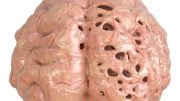
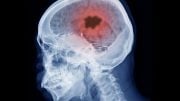

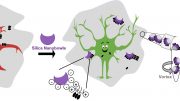
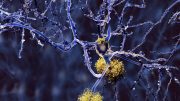
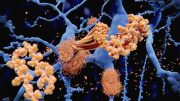

Be the first to comment on "Protein Arl8b Identified As Potential New Biomarker for Alzheimer’s Disease"